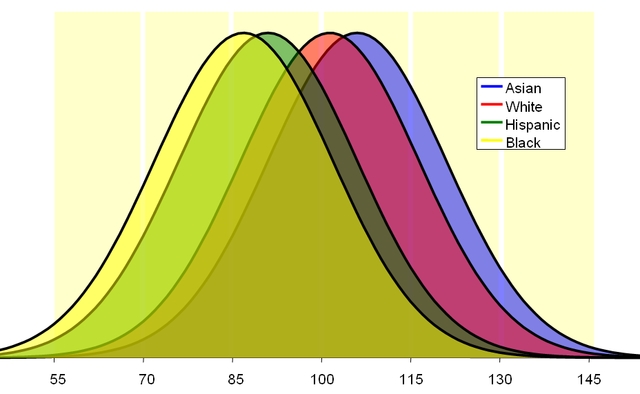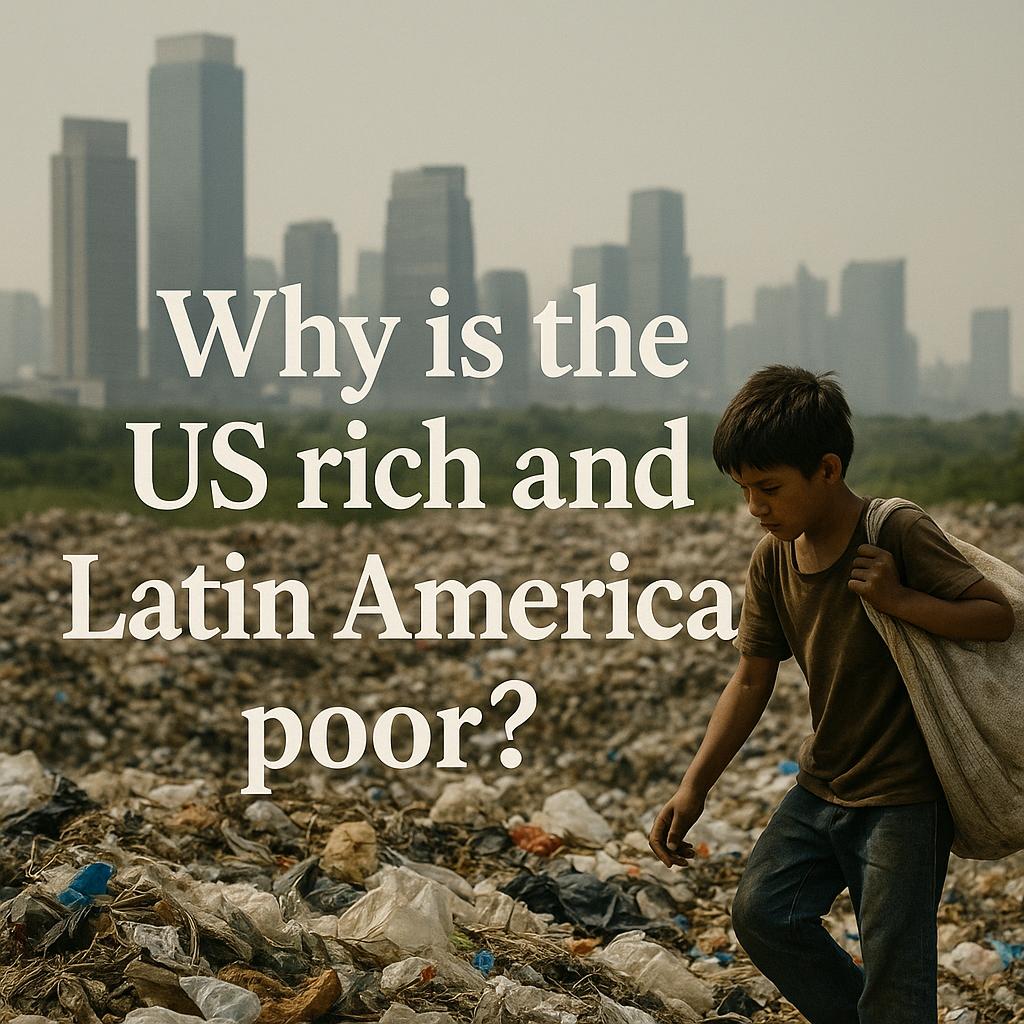Two vast regions. One hemisphere. Both blessed with rich soil, vast forests, and natural resources; both colonized by Europeans. Both fought for independence in the 18th and 19th centuries. And yet, one became a global superpower while the other remains locked in cycles of poverty, corruption, and inequality.
Why did the United States soar while Latin America stumbled? The usual answers—geography, culture, bad luck—are too shallow. The truth lies deeper. It lies in elite domination, foreign intervention, structural sabotage, and a global financial system designed to keep the Global South in chains.
It is a story of opportunity denied, development hijacked, and a region punished for having both resources and resistance.
The colonial legacy – inequality by design
Latin America’s fate was sealed early. From the start, Spanish and Portuguese colonizers focused on extraction, not settlement. They came for gold, silver, sugar, and slaves—not to build communities or civil societies.
Massive tracts of land were handed to conquistadors, nobles, and the Catholic Church. Enormous estates—encomiendas and latifundios—replaced independent farms. Native populations were enslaved, wiped out, or forced into rigid caste systems. Racial hierarchy was law.
In contrast, Anglo settlers in North America arrived with families. They built villages, townships, and commercial networks. Property was distributed more broadly. Protestant ethics encouraged literacy, individualism, and local governance. While slavery still stained U.S. history, its economic model was more decentralized, and its path to industrialization faster.
From the beginning, Latin America was shaped to serve Europe. The United States, by contrast, was shaped to grow.
The shadow elites – the rich soil that ruined everything
Independence did not bring justice. The old colonial oligarchies adapted. They simply dropped their European flags and raised republican ones. The same families remained in power—now dressed in military uniforms, legal robes, or presidential sashes.
Land reform never came. Education remained elitist. Taxation avoided the rich. And infrastructure served exports, not people.
Why would the ruling class change anything? They had everything to lose. Silver from Bolivia, copper from Chile, coffee from Colombia, and cattle from Argentina poured profits into their pockets. Industrialization was unnecessary. Innovation was a threat. Better to keep peasants illiterate, wages low, and democracy ornamental.
In Latin America, wealth destroyed reform. The richer the soil, the tighter the grip of those who owned it.
U.S. imperialism – stability for business, sabotage for people
While internal elites blocked reform, the United States made sure no outsider would ever succeed either. Any Latin American movement that challenged the status quo—whether communist, socialist, nationalist, or even mildly progressive—was treated as a security threat.
In the 20th century, Washington deployed coups, covert ops, and outright invasions. Guatemala’s Árbenz was overthrown in 1954 for trying land reform. Chile’s Allende was toppled in 1973 for winning an election with socialist ideas. The Contras tore Nicaragua apart with U.S. weapons. Panama was invaded. Cuba was strangled for decades. Every time a leader tried to act independently, the U.S. responded with violence or economic warfare.
Later, imperialism changed costume. It traded guns for banks. Today, the U.S. controls Latin America through finance.
Debt became a leash. Loans from the IMF and World Bank come with strings: slash education, sell state assets, ban tariffs. These structural adjustment programs hurt the poor, enrich the elite, and tie governments to perpetual repayment. They are not support. They are submission.
International control
Trade agreements like NAFTA and CAFTA follow the same logic. They open Latin markets but close Latin sovereignty. U.S. corporations gain access, but Latin governments lose control. Investor-State clauses allow foreign companies to sue sovereign states for regulations that harm profit. Even domestic laws can be overruled by tribunals run abroad.
Meanwhile, the U.S. controls global finance. The dollar is the world’s reserve currency. The SWIFT network, based in the West, can freeze any transaction. American credit agencies can tank economies with a rating drop. Latin America may have flags and anthems, but its central banks are not truly free.
And then come the technocrats. Educated in Yale, Harvard, and Chicago, they return home preaching deregulation, privatization, and market supremacy. They speak the language of Wall Street, not of favelas. Their reforms please the IMF. But their people riot in hunger.
This is not military occupation. It is financial colonization.
Latin America joins the exploited Global South
Today, Latin America is firmly embedded in the Global South—a category used to mask the reality of global hierarchy. The Global North still extracts, dominates, and manipulates. Only now, it calls it “development.”
Western banks own the profits. Latin America keeps the debt. Western corporations own the lithium, the soy, the copper. Latin Americans work the mines, scrape by, or migrate northward in desperation.
This system is not broken. It works exactly as designed. As shown in this article, the Global South remains poor because its poverty is profitable—for someone else.
Cultural divergence – institutions, law, and daily behavior
Beyond power structures, cultural foundations mattered too. Protestant Anglo culture emphasized contracts, merit, and practical problem-solving. Catholic Iberian culture stressed hierarchy, ritual, and obedience. These roots shaped everything.
Anglo law evolved into common law—flexible, precedent-based, entrepreneurial. Latin law followed civil codes—rigid, top-down, and bureaucratic.
The U.S. favored local government. Latin America centralized everything. The U.S. trusted the individual. Latin elites feared them.
Even today, people in Latin America often rely more on family, friends, and informal solutions than on the state. Corruption is not a cultural flaw—it is a rational survival mechanism in a system designed to fail them.
Culture did not cause poverty. But it shaped how power was distributed—and how it could be challenged.
The controversial truth – Latin Americans have low IQ
Should I lie and say that every races are the same? IQ, highly heritable, is different between European Whites, Latinos, African-American. In the US, there were tons of opportunities for blacks to achieve something via positive discrimination. And blacks live not only in the US, but also in France. No, we don’t see any Nobelist for exact sciences even with the huge opportunities. Africa is full of blacks (of course it is underdeveloped) but we don’t see an African genius making it big in the US.

Therefore, the lack of people for cognitively highly demanding professons is still the same.
Please note: It is extremely dangerous to be racially hateful, even though races have differences. I do not care whether you are white, yellow, black, or brown—I judge you by your intelligence (not just IQ, but in a broader, generalizable sense), your personality traits, your morality, and your formal and informal education.
Conclusion – same potential, different fate
The United States and Latin America both had land, labor, and ideas. But only one was allowed to develop.
The U.S. crushed its natives, imported its workers, and industrialized early. Then it protected itself with tariffs, invested in education, and exploited global markets. Latin America, meanwhile, stayed chained to plantations, mines, and foreign creditors.
Its elites blocked reform. Its neighbors blocked independence. And the world blocked escape.
It was not destiny. It was power. And unless that power shifts, Latin America will remain rich in soil—but poor in life.

Leave a Reply